Bureau Veritas Grants AiP for Innovative Ocean Clean-up Vessel
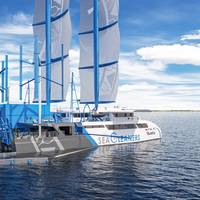
Bureau Veritas has awarded an Approval in Principle (AiP) to the MANTA, a vessel offering solutions for collecting and repurposing floating plastic waste in areas of high marine litter concentration, in the coastal waters of most affected countries, and near the estuaries of major rivers.The unique vessel, due to set sail at the end of 2025, was developed by MANTA INNOVATION, the integrated engineering design office of the NGO The SeaCleaners, with the support of naval architects at SHIP-ST and LMG MARIN.Waste-to-energy Conversion UnitA 56m long…
Shipping Giant CMA CGM to Stop Transporting Plastic Waste
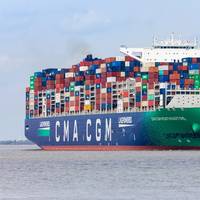
Global shipping group CMA CGM said on Friday it will stop transporting plastic waste on its vessels from June 1 to help curb pollution.One of the world's largest container lines, the French-based firm said it currently carries the equivalent of about 50,000 standard containers of plastic waste per year.Plastic has become a focus of international negotiations on pollution as the oil derivative has filled refuse sites and littered oceans. Some countries have moved to ban imports of such waste.In its announcement made during the One Ocean Summit hosted by France…
European Group Lifts Funding to $4.6B to Prevent Plastic Pollution in Seas

A group of European development banks plan to double its funding for global efforts to stop plastic waste from polluting the world's oceans to 4 billion euros ($4.6 billion).The Clean Oceans Initiative, led by the French and German development banks and the European Investment Bank is the largest such grouping targeting plastic pollution of the sea.Around 8 million tonnes of plastic waste enters the oceans every year, most of it discarded on land or washed into rivers, the group said on Friday…
Opinion: Let's Get the Plastic Out of Our Lives (& Waterways)
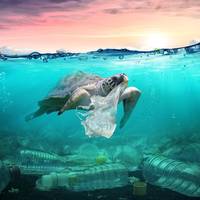
A confession. I'm part of a very big problem that's easy to ignore. Last year, I contributed the U.S. average-per-person 300 pounds of plastic garbage to wherever it went after convenient curbside pickup. So out of sight, out of mind, right? Not really, but does it matter? Yes, it does.In a fascinating recent report, the National Academy of Sciences, Engineering, and Medicine politely told us that we're choking ourselves to death on manufactured plastic waste and that 80% of the harmful plastic in the ocean comes from land-based sources.It's the micro-plastics…
Tech File: Hatenboer-Water Develops "Plastic Free @Sea" Concept
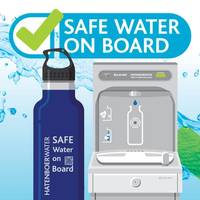
While much of the maritime world's tech chatter focuses on emissions and fuel choice, Dutch water company Hatenboer-Water developed the Plastic Free @Sea concept as a smart solution to reduce plastic waste on board ships at sea.Reducing plastic waste has become key in environmental protection, including in the shipping industry. Answering the call is Hatenboer-Water with its Plastic Free @Sea concept, designed to help shipowners reduce the tens of thousands of plastic water bottles on board to virtually zero…
Marine Concept Design: Ocean "Plastic Harvester" Completes Prototype Testing
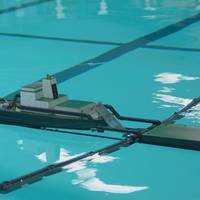
Our Cleaner Planet, a non-profit startup with an 'innovative technique to remove plastics from our oceans', said it has completed prototype testing of its first plastic harvester and is now ready to move forward with larger unit testing. The program is scheduled to launch the first of its full-sized, plastic harvesters into ocean operation in 2025.“The test parameters for our 1:164-scale prototype were set up to evaluate speed and control and the first stage of the filtration process,” said Pat Marshall, founder of Our Cleaner Planet.
Ocean Cleanup Struggles to Fulfill Promise to Scoop Up Plastic at Sea
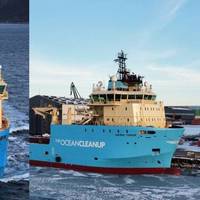
Docked at a Canadian port, crew members returned from a test run of the Ocean Cleanup's system to rid the Pacific of plastic trash were thrilled by the meager results — even as marine scientists and other ocean experts doubted the effort could succeed.The non-profit, launched in 2013 amid buoyant media coverage, hopes to clear 90% of floating plastic from the world's oceans by 2040. But the group's own best-case scenario — still likely years away — envisions removing 20,000 tonnes a year from the North Pacific…
Maersk Supply Service Sends Another Vessel to Support The Ocean Cleanup
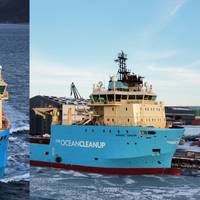
Danish offshore supply vessel operator Maersk Supply Service will deploy another vessel to support The Ocean Cleanup in its effort to remove plastic from the oceans.MSS said that this summer the Maersk Trader vessel will join its sister vessel Maersk Tender in the Pacific Ocean, strengthening The Ocean Cleanup’s pursuit to rid the oceans of plastic.The Maersk Trader is contracted for one year and will initially work on a trial in the Great Pacific Garbage Patch in Summer 2021."The extra vessel, Maersk Trader, was made possible by A.P.
Plastic Free Oceans: Maersk Supply Service, The Ocean Cleanup Extend Partnership

Danish offshore support vessel operator Maersk Supply Service will continue providing marine support to The Ocean Cleanup, a nonprofit engineering and environmental organization working to rid oceans of plastic pollution.The Ocean Cleanup’s mission is to develop advanced technologies to rid the world’s oceans of plastic. To achieve this goal, the company's aim to stop the inflow via rivers and clean up what has already accumulated in the ocean. Its ultimate goal is reaching a…
SCIENCE: Seafloor Microplastic Hotspots Controlled by Deep-sea Currents

New research has revealed the highest levels of microplastic yet recorded on the seafloor, with up to 1.9 million pieces in an area of just one square metre.Published this week in the journal Science, this study shows how deep-sea currents act as conveyor belts, transporting tiny plastic fragments and fibers across the seafloor. These currents can concentrate microplastics within huge sediment accumulations, which the authors of the research term ‘microplastic hotspots’. These…





